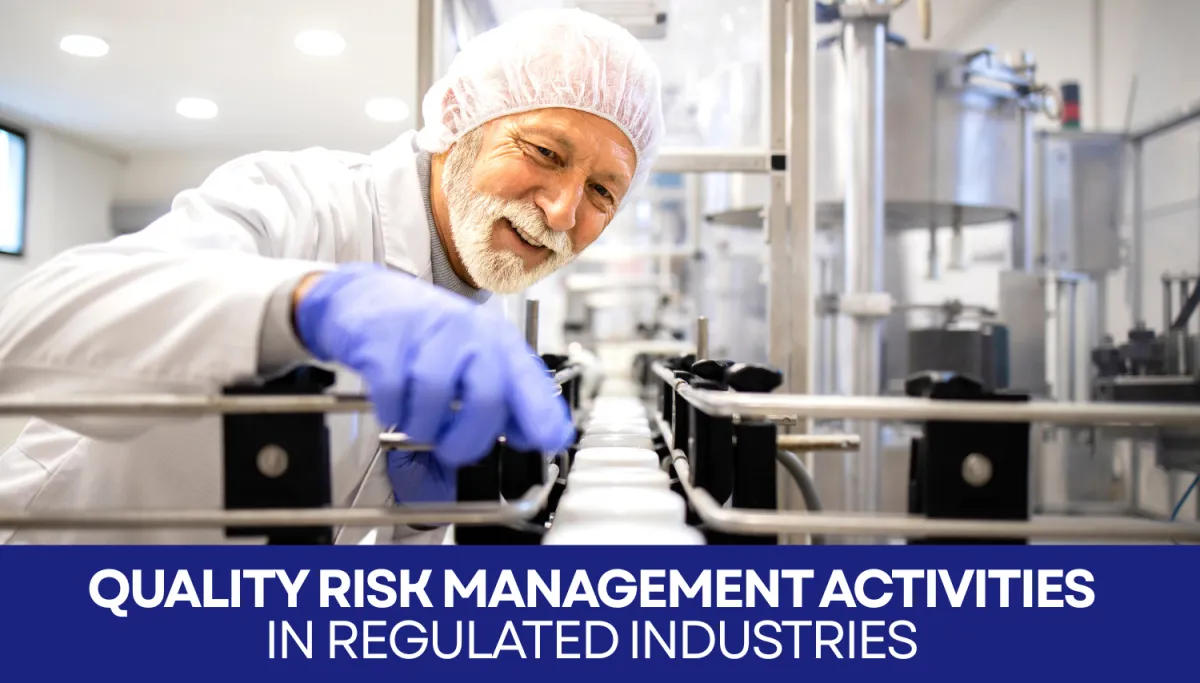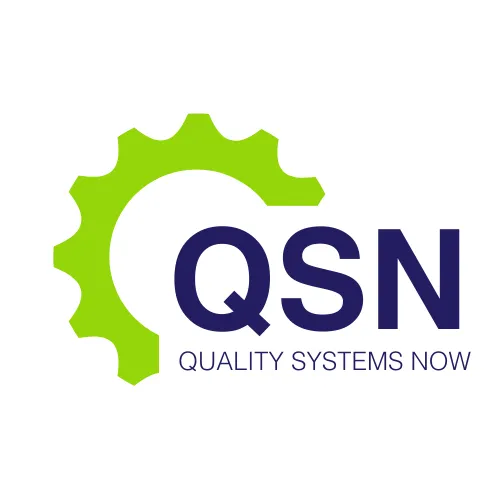LATEST NEWS

Quality Risk Management Activities in Regulated Industries
Quality Risk Management (QRM) is a fundamental component of regulatory compliance in pharmaceutical manufacturing, medical devices, biotechnology, testing laboratories, and other STEM-related fields. As regulatory agencies continue to emphasise risk-based decision-making, implementing effective QRM activities has become essential to ensure product quality, patient safety, and compliance with global standards. From the design phase through to production, distribution, and post-market surveillance, QRM provides a structured approach to identifying, assessing, controlling, and reviewing risks. This article explores the scope, principles, and practical implementation of QRM activities across regulated industries, with insights drawn from over 25 years of experience at Quality Systems Now.
Regulatory Foundations of Quality Risk Management
Regulatory frameworks globally have embedded QRM principles within their guidance documents. The ICH Q9 guideline, adopted in Australia and internationally, outlines the model for QRM in pharmaceutical manufacturing. Similarly, ISO 13485 for medical devices and ISO 17025 for laboratories require risk-based thinking and risk control methodologies throughout the quality management system.
In pharmaceuticals, QRM supports Good Manufacturing Practices (GMP) by enabling rational, science-based decisions regarding facility design, equipment qualification, process validation, deviation management, and product release. In medical devices, ISO 14971 forms the cornerstone of product risk management across the device lifecycle.
Quality Systems Now supports organisations in translating these regulatory expectations into tangible, documented, and integrated QRM systems tailored to the nature and complexity of their operations.
Key Principles of Risk Management
Effective QRM is based on the following principles:
Evaluation of risk should be based on scientific knowledge and linked to the protection of the patient.
The level of effort, formality, and documentation should be commensurate with the level of risk.
Quality risk management should be iterative and dynamic, subject to ongoing review.
These principles guide the selection of QRM tools, stakeholder engagement, and the depth of analysis applied to various quality scenarios.
QRM Framework: Process Overview
A systematic QRM process consists of four primary stages:
1. Risk Identification
This involves recognising potential hazards that could impact product quality, patient safety, data integrity, or regulatory compliance. Examples include microbial contamination in sterile manufacturing, cross-contamination in veterinary products, or calibration failures in analytical laboratories.
Quality Systems Now guides clients in conducting targeted risk identification sessions using proven techniques such as brainstorming, checklists, historical trend reviews, and failure mode reviews.
2. Risk Assessment
This phase evaluates the identified risks in terms of their:
Probability of occurrence
Severity of impact
Ability to detect the risk before it results in harm
The output is typically visualised in a risk matrix that categorises risks as low, medium, or high, guiding the decision-making process for control actions. Common QRM tools include:
Failure Mode and Effects Analysis (FMEA)
Hazard Analysis and Critical Control Points (HACCP)
Fault Tree Analysis (FTA)
Preliminary Hazard Analysis (PHA)
Our consultants at Quality Systems Now provide training and hands-on facilitation in applying these tools appropriately to your processes, facilities, and product types.
3. Risk Control
The goal of risk control is to reduce the risk to an acceptable level through mitigation or elimination. This may involve:
Modifying processes or equipment
Implementing engineering controls
Enhancing standard operating procedures (SOPs)
Increasing monitoring and alert systems
Importantly, the residual risk—the risk remaining after controls—must be evaluated and documented. For example, in a laboratory operating under ISO 17025, this may mean installing additional fail-safes on temperature-sensitive instruments to prevent data loss.
4. Risk Review
All risk decisions and controls must be periodically reviewed to ensure they remain effective. Changes in process, equipment, materials, or regulations may introduce new risks or alter existing ones. This is particularly important during:
Product lifecycle changes
Facility expansions
New supplier onboarding
Major deviations or complaints
Quality Systems Now helps clients embed QRM into their Management Review and CAPA systems, ensuring that QRM is not a one-off activity, but a continual process of improvement.
Integrating QRM into the Quality Management System
Risk management should not exist in isolation but must be integrated into the broader Quality Management System (QMS). This integration includes:
Change control processes: All proposed changes should undergo a risk assessment before implementation.
Deviation and investigation systems: Root cause analysis should include risk evaluation and link to appropriate corrective and preventive actions (CAPA).
Supplier qualification: Risk profiles of suppliers should inform audit frequency, material testing requirements, and contractual controls.
Validation and qualification: Risk-based approaches determine the depth of equipment, utility, and process validation.
Internal audits: Audit planning should reflect areas of higher risk exposure.
Our team at Quality Systems Now works with your organisation to design QMS elements that seamlessly incorporate risk-based thinking, ensuring consistency with ISO 9001, ISO 13485, and GMP expectations.
Documentation and Recordkeeping
Documentation is a critical part of QRM. Regulators expect clear, traceable records that justify why a risk was accepted, mitigated, or transferred. Essential QRM documents include:
Risk assessments and reports
Decision-making rationales
Risk control implementation records
Periodic review outcomes
Training records on QRM tools and procedures
Inadequate or missing QRM documentation is a common deficiency cited during audits and inspections. Quality Systems Now offers templates, SOPs, and training programs to strengthen documentation practices in alignment with compliance expectations.
Common Challenges and How to Overcome Them
Despite its importance, QRM implementation often faces challenges such as:
Lack of expertise in QRM tools
Inconsistent application across departments
Over-complex risk models that are difficult to maintain
Failure to integrate QRM into daily operations
With decades of hands-on experience, Quality Systems Now provides solutions that demystify QRM and promote a practical, sustainable risk culture. Our approach balances regulatory rigor with operational efficiency, ensuring that QRM adds value without becoming a bureaucratic burden.
Case Study Example
A start-up veterinary pharmaceutical company approached Quality Systems Now to prepare for TGA GMP licensing. An initial gap analysis revealed inconsistent risk documentation, ad-hoc supplier qualification, and missing change control risk assessments. Through a structured QRM implementation program, we:
Developed a tailored Risk Management SOP
Trained all key staff in FMEA and risk matrix use
Embedded QRM into existing procedures
Facilitated cross-functional risk workshops
Documented risk assessments for all critical processes and changes
The company achieved GMP licensing within 12 months and passed its audit with zero major findings related to risk management.
Contact us today to discuss how Quality Systems Now can help
Quality Risk Management is a cornerstone of modern quality systems, essential for achieving and maintaining compliance in pharmaceutical, medtech, laboratory, and other STEM-related sectors. When effectively implemented, QRM not only supports regulatory requirements but also drives operational excellence and product reliability.
Whether your organisation is new to QRM or seeking to improve existing practices, Quality Systems Now offers expert support tailored to your needs. With over 25 years of experience across GMP, ISO 13485, ISO 17025, and ISO 9001, we ensure that risk management becomes a robust, value-adding component of your quality strategy.
Partner with Quality Systems Now to build a quality risk management system that meets regulatory expectations and protects your business, your products, and your customers.
